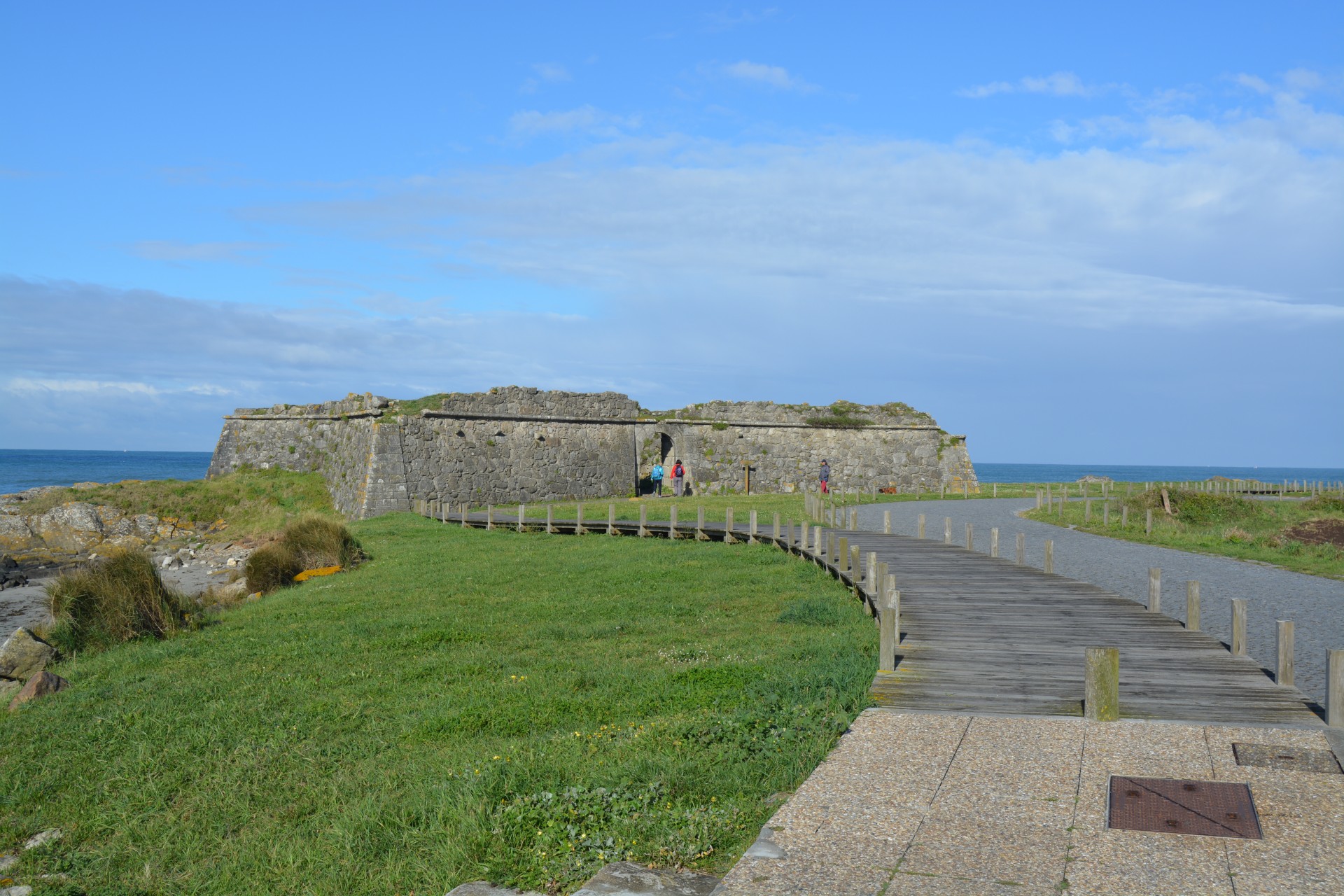Pedras Ruivas Geosite – Local Natural Monument
Points of interest
Vinha Fort
Vinha fort, also known as the Areosa fortalice or the Old Castle, located in the place of Rego de Fontes, to the south of the Vinha cove, was one of the four forts built on the coast between Caminha and Viana do Castelo at the end of the Portuguese Restauration War (1640-1668) to reinforce the coastal defence of the Alto Minho. The aim was to suppress the frequent Algerian and Salentino pirate raids on the Portuguese coast.
Luis Figueredo Guerra (1926) locates this fort in the village of “Ariosa” and calls it Rego de Fontes Fort, 2 kilometres from the city, suggesting that construction was completed in 1701. He also indicates that it was known as the Castelo Velho (Old Castel) in Viana as it was abandoned. On an architectural level, it is a small bastion or star fort with simple curtain walls. It has a star-shaped design in a Mannerist style with 4 bulwarks, all of which are slightly different, built in granite stone. The side facing the sea is curved with a barbette platform, while the opposite side is concave. This holds the main entrance with a perfect round arch and a pronounced central voussoir.
Structurally it is similar to the Montedor and Cão forts. At the time, the dimensions and shape of these forts were considered to be an advancement in surveillance and defensive systems. It has commonly been assumed that this group of coastal forts were designed by the same architect.
The fort was constructed to the north of the Santiago da Barra Fortress in Viana do Castelo to reinforce the field of fire. Together with the fortress located alongside the Lima River and the Montedor fort, a larger area of cross-firing was obtained.
In 1972 the Directorate General for National Building and Monuments (DGEMN) undertook measures to recover and restore the Areosa fortalice. The entrance was reconstructed as well as certain sections that were in poor state of repair. Other repair work was carried out in the following years to repair the basis of the corners on the west side, destroyed by wave action as well as parts of the fort walls. The care of the fort was transferred to the Regional Commission of Tourism for the Alto Minho by deed of assignment on February 21 1983.
It has been classified as a National Interest Monument by Decree law no. 251/70, published in the Government Gazette, 1st Serie no. 129 of 3 June.

